Finding oil on your spark plugs can mean bad news for your engine. There are many reasons why oil can get onto spark plugs.
Oil on spark plugs can be caused by bad valve cover gaskets, worn spark plug o-rings or valve guides, a faulty head gasket or a broken piston ring. Symptoms of oil on spark plugs include blue smoke from the exhaust, poor fuel economy and engine misfires.
Most of the time oily spark plugs are caused by a leaking valve cover or bad spark plug o-ring that can easily be replaced. But sometimes it’s more serious and can be caused by a leaking head gasket.
Having oil on your spark plugs for a prolonged period of time will result in engine misfires, poor fuel economy and lack of engine power. It could also potentially destroy your catalytic converter due to unburnt fuel making its way into the exhaust.
What Causes Oil On Spark Plugs? (6 Common Causes)
Oil on spark plugs can be caused by a variety of factors, but one of the most common culprits is leaky O-rings, also known as spark plug tube seals. These seals are designed to keep engine oil and other fluids on the outer side of the spark plugs, preventing them from getting wet or damaged. If the O-rings fail, engine oil can leak into the spark plug well and onto the spark plugs, causing a range of problems.
Spark plugs are one of the few components in direct contact with the combustion process. Engine oil, by contrast, should not come into contact with spark plugs ever. Here are a few reasons why oil can get onto spark plugs in more detail:
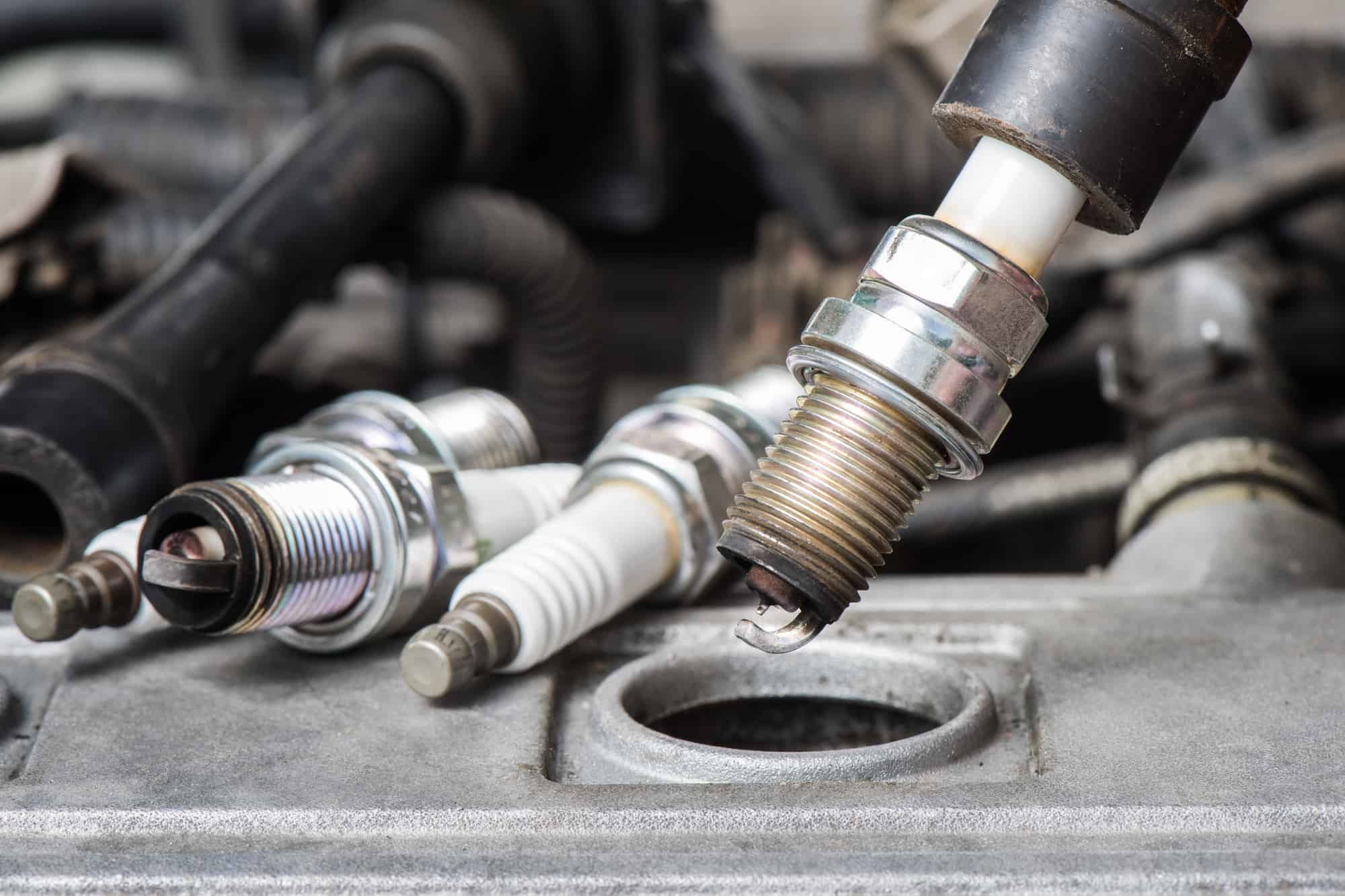
Cause 1. Bad Valve Cover Gaskets
Spark plugs are not the only component installed on cylinder heads. Depending on the engine design (OHV/SOHC/DOHC) you may have the intake and exhaust valves, valve springs, cam(s), valve guides, etc.
Most of those components require lubrication, so engine oil is pumped from the oil pan all the way to the heads.
The role of the valve cover gaskets is keeping the oil on the cylinder heads and away from the rest of the engine. Due to the high temperatures involved, valve cover gaskets tend to wear allowing oil leakages. Dripping oil can reach spark plugs in Over Head Valve (OHV) designs and hence cause the oil on plug condition.
Cause 2. Degraded Spark Plug O-Ring
On the Single Over Head Cam and Double Over Head Cam (SOHC/DOHC) designs the valve cover includes a seal often known as the spark plug O-ring. Similar to the previous point, heat tends to degrade this seal over time letting the oil reaching the spark plugs.
Cause 3. Defective or Worn Valves Guides
Another possible cause for this problem is excessive wear on the valve guides. The constant movement up and down of the valves, literally “pumps” oil into the combustion chamber and causes oil on the spark plugs.
Cause 4. Broken Piston Compression Rings
A broken compression ring is also a possible cause for this condition. When the engine starts to age and compression starts dropping, the oil pan builds-up positive pressure. That pressure can find a way to the combustion chamber during the compression cycle if the ring is broken.
Cause 5. Faulty head-gasket
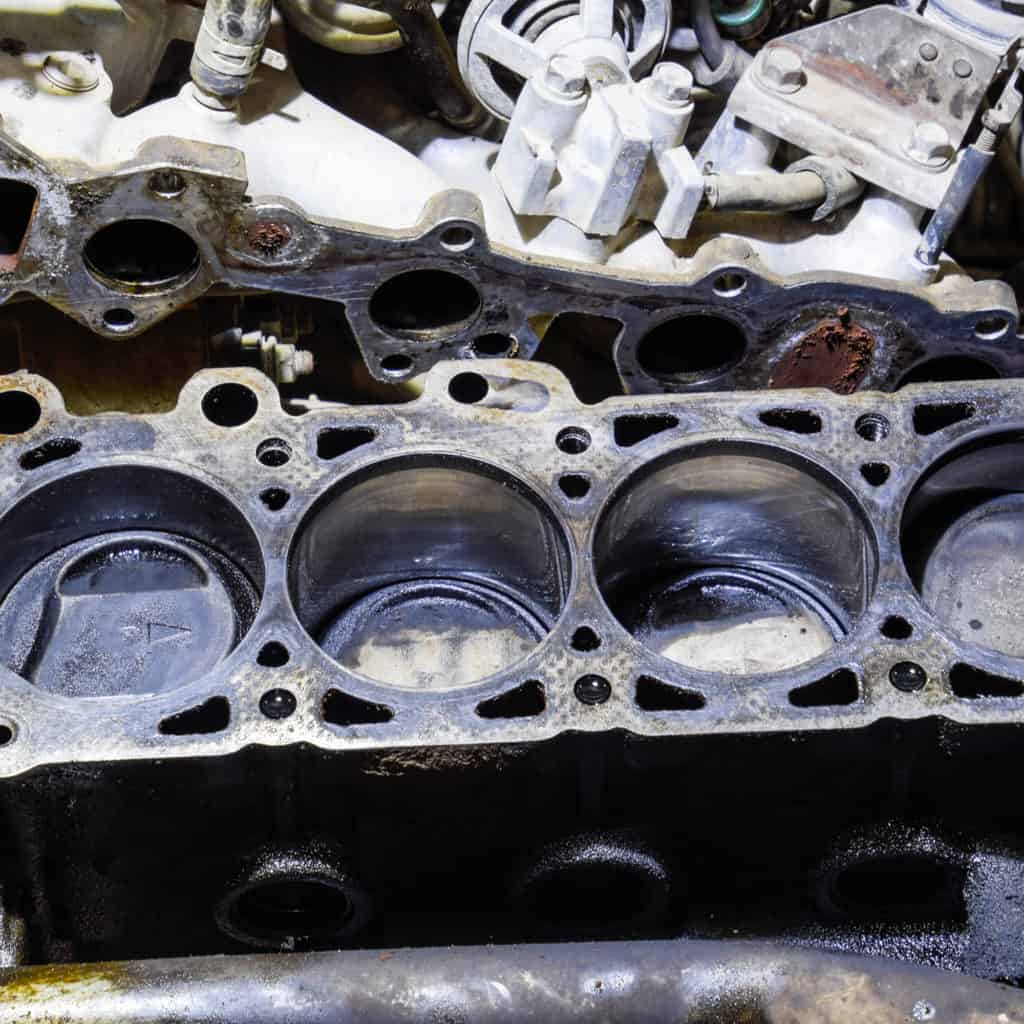
Pressurized engine oil flows from the oil pan all its way up to the head of the engine via the oil lubrication system. A faulty head gasket could allow oil to enter the cooling system and/or the engine cylinder.
Cause 6. Broken Piston Head
A less likely (but possible) cause for this problem is a broken piston head. Similar to the last point, positive pressure coming from the oil pan could freely pass through the piston to the combustion chamber and onto the spark plug.
6 Symptoms Of Oil On Spark Plugs
The most common symptoms of oil on spark plugs can include the following.
Symptom 1- Blue smoke from the tailpipe
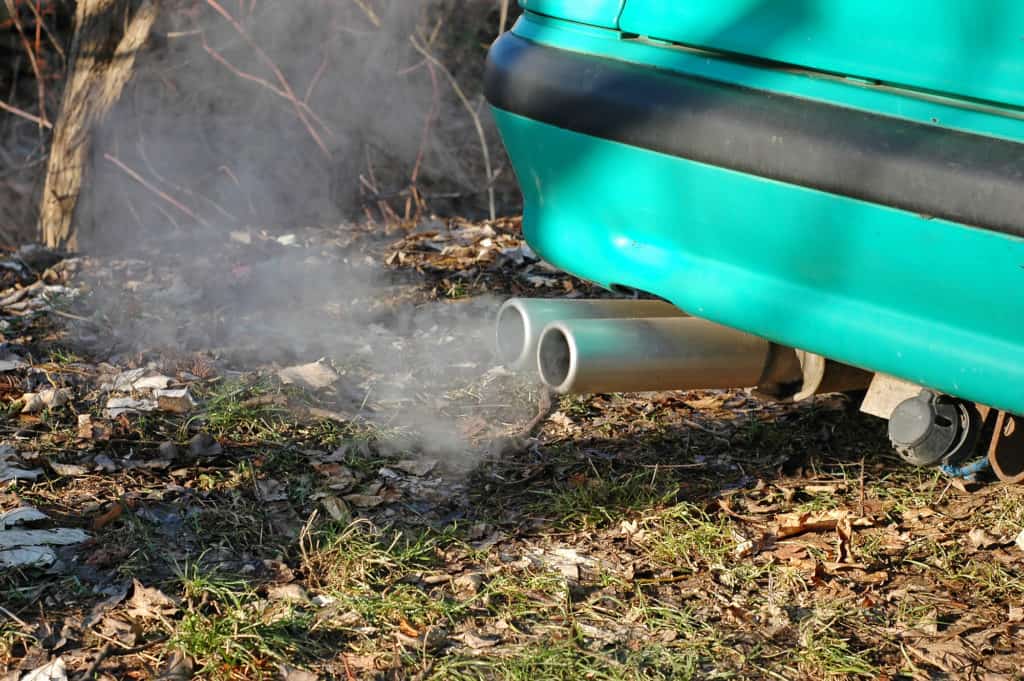
If there is oil on the spark plugs as they are no longer working as they should, then engine ECU will attempt to correct a decrease in fuel combustion efficiency by tweaking the fuel to air ratio in the cylinders. This often means an increase in the amount of fuel that is used by the engine, causing it to ‘run rich’. If there is too much fuel entering the combustion chambers, this can result in unburnt fuel leaving via the exhaust valve and entering the exhaust. This can make the exhaust gases appear blue or white.
Symptom 2 – Poor fuel economy
A very common symptom of oil on spark plugs is a noticeable drop in fuel economy. An increase in fuel consumption is primarily caused by the inability of the spark plug to create a good quality spark. Spark plugs tips can operate at temperatures in excess of 500°C when new. If oil finds its way down onto a spark plug tip, then this will quickly burn at this type of temperature and create a burnt oxidized coating on the spark plug tip. A burnt spark plug won’t operate efficiently and won’t generate a reliable spark.
The ECU will try to offset the underperformance of the spark plug by increasing the amount of fuel so that the same pressure can be created in the combustion chamber.
Symptom 3 – A decrease in engine performance
As explained above, a spark plug that comes into contact with engine oil won’t be able to generate a spark for very long. This is because the engine oil will contaminate the spark plug tip and prevent it from generating a spark that is capable of igniting the fuel/air mixture in the combustion chamber.

If the gas mixture in the combustion chamber is not burning efficiently or completely, then it won’t generate the level of pressure needed to push the piston with enough force when the engine requires it while under load.
Symptom 4 – Possible engine misfires
Another common symptom of oil on one or more spark plugs is engine misfires.
An engine misfire is caused by the incomplete combustion of the gas/air mixture inside one or more of an engine’s cylinders. This will feel like hesitation or shaking when you press down on the accelerator. Oil in the spark plug well or on the electrode tip of a spark plug will interfere with its ability to generate a spark that is hot enough to completely ignite the fuel/air mixture.
Symptom 5 – Engine Backfires
If the fuel in the combustion chamber is not burning up completely, then it will escape via the exhaust valves to the exhaust pipe.
An engine backfire is when the gas/air mixture in your combusts after it leaves the combustion chamber of an engine cylinder. If fuel particles don’t burn in the combustion chamber as they should they will enter the exhaust pipe with a high energy charge. That energy will be unleashed in the form of mini-explosions or backfires.
Symptom 6 – Gas smell from exhaust pipe
Another effect of gas not being burnt entirely in the combustion chamber is the smell of gas from the exhaust. Oil on spark plugs often cause a gas smell from exhaust fumes, especially when the engine is cold or straight after the engine is started.
The reason why is because at startup the engine will often use a slightly richer gas/air mix. This is because cold fuel is more difficult to vaporize so more fuel is needed to create a combustible air-fuel mixture. If there is oil on the spark plugs this will further compound the problem of cold fuel and will cause more fuel to be dumped directly into the exhaust causing a strong gas smell.
How To Diagnose The Cause Of Oil On Spark Plugs
1. Visual Inspection
> OHV Engines: perform an exhaustive visual inspection of cylinder heads exterior. Any sign of oil coming from the valve cover gaskets is enough to replace them.
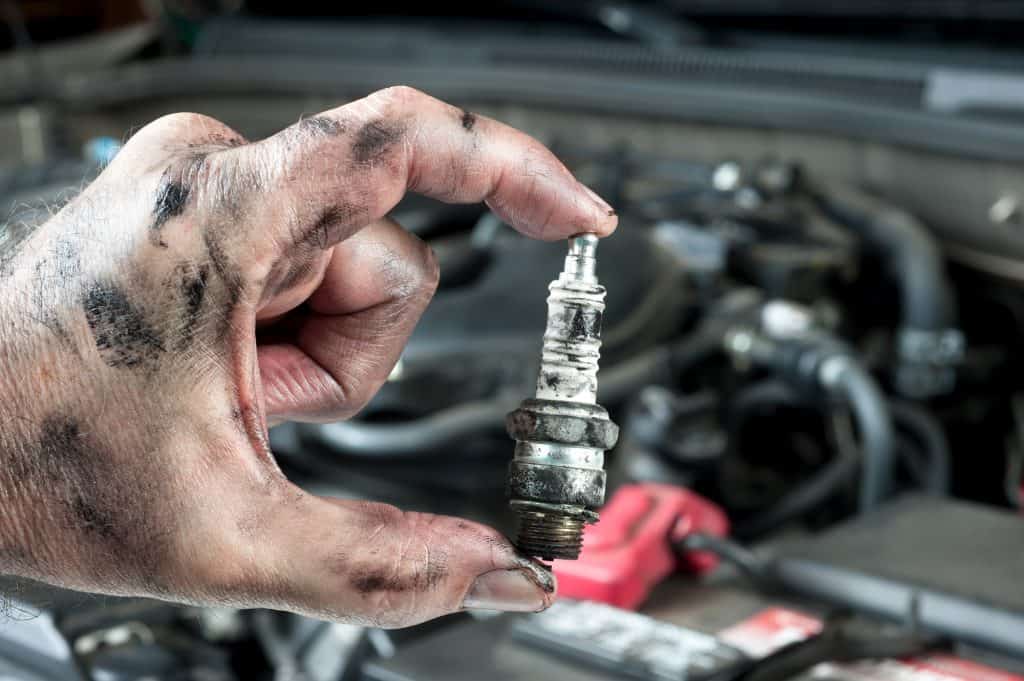
> SOHC/DOHC Engines: perform the same visual inspection conducted for OHV engines and replace the valve cover gaskets if necessary. Additionally, check the exterior condition of all spark plugs. Any sign of engine oil on the spark plug wires, coil-over-plug or the spark plug ceramic coating is enough to replace all spark plugs O-ring seals.
2. Engine Tests
In my experience, 80% of the time oil on spark plugs is caused by a bad valve cover gasket or bad spark plug O-ring. The other 20% is mostly related to engine problems.
> Engine compression test: warm-up the engine until it reaches its normal operating temperature. Remove all spark plugs and turn the crankshaft manually in the direction of its normal rotation until the piston #1 reaches its compression stroke top dead center (TDC). Using the appropriate adapter connect the engine compression gauge to the cylinder #1.
Disable the fuel and ignition system and crank the engine 6 revolutions while keeping the pedal on the wide open throttle. Take note of the gauge reading and repeat the procedure for all cylinders. Consult the OEM literature to determine if the compression is within the accepted range (usually above 100psi is fine).
A difference greater of 10% between cylinders should be considered suspicious, especially if one of the cylinders has oil on its spark plug.
> Engine differential pressure test: this test may not be as popular as the prior one, because involves a clean compressed air source, but at the end, saves a lot of time in determining the root cause of the compression problem. The procedure is basically the same, you need to warm-up your engine, rotate the crankshaft until piston #1 reaches TDC and then disable ignition and fuel systems.
Once everything is ready, connect the special differential pressure gauge to cylinder #1 as you did before. Now using the integrated air regulator adjust the air pressure to 90-80psi. Ideally, the cylinder manometer should show the same pressure. A difference greater than 15% is an indication of a leakage.
The great advantage of this procedure over the traditional compression test is that you can locate where the leak is. While the cylinder is under air pressure you can look for air leakages in the engine valves, engine coolant, or positive pressure in the oil pan.
What Next: How To Fix Oil On Spark Plugs (In 6 Steps)
One of the most common causes of finding oil on spark plugs is a damaged or leaking valve cover gasket or spark plug O-ring. Below is a brief explanation of how to change them.
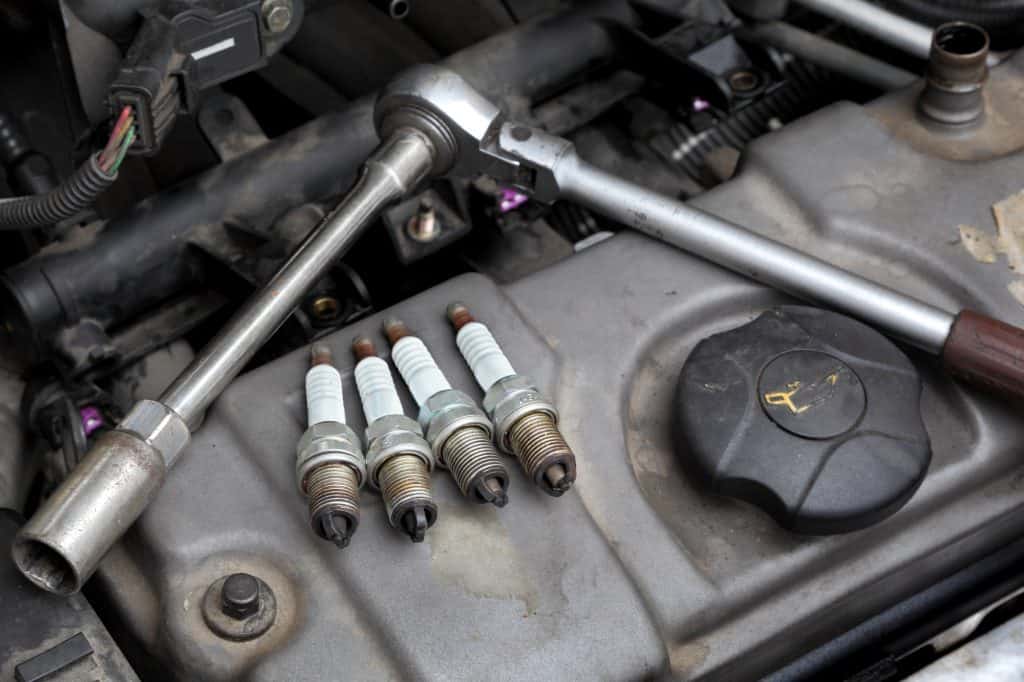
Before you start, it’s a good idea to check a service/repair manual for your vehicle to see the exact repair procedure. Also make sure you have all of the correct parts and necessary tools before starting. I recommend using the correct torque wrench for tightening bolts during reassembly.
Step 1 – Preliminary Checks
Ensure that the ignition switch is off and then disconnect the vehicle battery. Detaching the negative terminal is usually enough.
Step 2 – Remove valve covers
Remove all decorative covers from the engine. Remove valve cover bolts and gently pull it out. You might find that the valve cover has tightly adhered to the head. If that’s the case use a proper tool (a rubber mallet for instance).
Step 3 – Remove The Spark Plugs
Carefully remove each of the spark plugs using a spark plug removal socket. Inspect each spark plug for oil leakage and general wear and tear as you remove them. If you are having trouble removing a spark plug because it is damaged or stripped, then read our article on how to remove a stripped spark plug for guidance.
Step 4 – Remove the old gasket and/or O-ring seal
Remove the old gasket, depending on the engine you may find it difficult to remove the old gasket if there was silicone applied during installation. Remove the O-ring seal from all cylinders.
Step 5 – Clean the head and valve cover surface
Using plastic tools (never metal tools) peel off any trace of the old gasket. Clean both surfaces (valve cover and cylinder head) using an appropriate degreaser. Be very careful while doing so, especially when cleaning the cylinder heads, avoid any substance reaching the engine internals.
Step 6 – Install the new gasket and/or O-ring seal
Apply the recommended silicone (only if the engine OEM literature says so) and then proceed to install the valve covers and spark plugs. It’s very important to fit the correct spark plugs when after carrying out this repair. If you need help choosing the best spark plugs then check out our best spark plugs article.
As an Amazon Associate we earn from qualifying purchases.









I’ve noticed a decrease in my car’s fuel economy recently and a bit of blue smoke coming from the exhaust. Could these be symptoms of having oil on my spark plugs, and if so, how would I go about diagnosing this myself before taking it to a mechanic?
I’ve noticed some blue smoke coming from my exhaust and a drop in fuel economy recently. Could these issues be related to the oil on my spark plugs, and if so, how can I diagnose which specific cause is behind my problem?